Podcast: Download
Subscribe: Apple Podcasts | RSS
 As someone who is not very visual, I’m glad I learned how to use sensory memory to help me use memory techniques better.
As someone who is not very visual, I’m glad I learned how to use sensory memory to help me use memory techniques better.
At first, I resisted the idea of using sensory modes other than seeing images.
In hindsight, that was silly. But it was really hard coming to grips with the fact that I don’t really see pictures in my mind.
After all, how is a “Memory Palace” supposed to work if you can’t “see” images in your imagination?
Well, whether you’re low on the visual scale, like me, or experience full-blown aphantasia, I’ve got 5 simple exercises that will help extend your abilities with memory techniques.
Each exercise involves a different kind of sensory memory you can combine with your Memory Palace Network.
These mental fitness routines will help you create and use Memory Palaces in combination with mnemonic imagery at higher speeds.
Perhaps more importantly than learning to create a Memory Palace Network and mental imagery quickly, you’ll use sensory memory to make the information stick in your mind for longer.
But here’s a quick warning before we get started:
There’s going to be some people who will still insist that they can’t do any of these exercises.
If that’s you, keep reading until you reach the final tip. Few, if any, will find an excuse for why they can’t use the final tip I’ll share.
The Strange History Of My (Non-Visual) Sensory Memory Blessings
It’s true. I don’t really see pictures in my mind.
Although I can’t say that I see “nothing” at all, if anything, I find the murky visual sensations almost useless, if not distracting.
When I tell my memory athlete friends this fact, they either:
- Know exactly what I mean
- Use some of the same processes I’m about to share
- Rarely describe how they are purely “visual” in some sense I have yet to understand…
I say “some sense,” because even with our current technology, it’s not possible to peer into anyone else’s imagination, let alone understand the various types of memory involved in someone else’s process.
Anyhow, if you’ve followed the Magnetic Memory Method Podcast for any amount of time, you’ve probably heard some of these conversations before.
If not, I recommend you listen to some of the interviews with memory athletes I’ve recorded over the years. I’ve learned a ton that have improved my practice and even re-listening to some of them will help your practice too.
Here are some of my favorite episodes that touch upon sensory memory and the true nature of mnemonic images as the real pros use them:
- Nelson Dellis on visual memory techniques
- Alex Mullen on building speed with mnemonics
- Mark Channon on memory and acting (very multisensory)
- Tansel Ali on gratitude in memory improvement
- John Graham on using memory training obstacles
- Idriz Zogaj on memory training apps
Of course, you need to listen to these episodes with yourself in mind.
Why?
Because at the end of the day, it doesn’t really matter what others do in their minds. Each of us experiences only one mind – the mind we’ve been blessed with.
That, and we each have our own experience of visual memory.
And what a blessing that there are so many differences when it comes to sensory learning.
But don’t get me wrong:
I do understand that some people currently have miserable experiences, and not being able to use the main memory techniques must be very miserable indeed.
So, if you can’t see images in your mind, here’s the first memory trick that will help you find more Memory Palaces and use them:
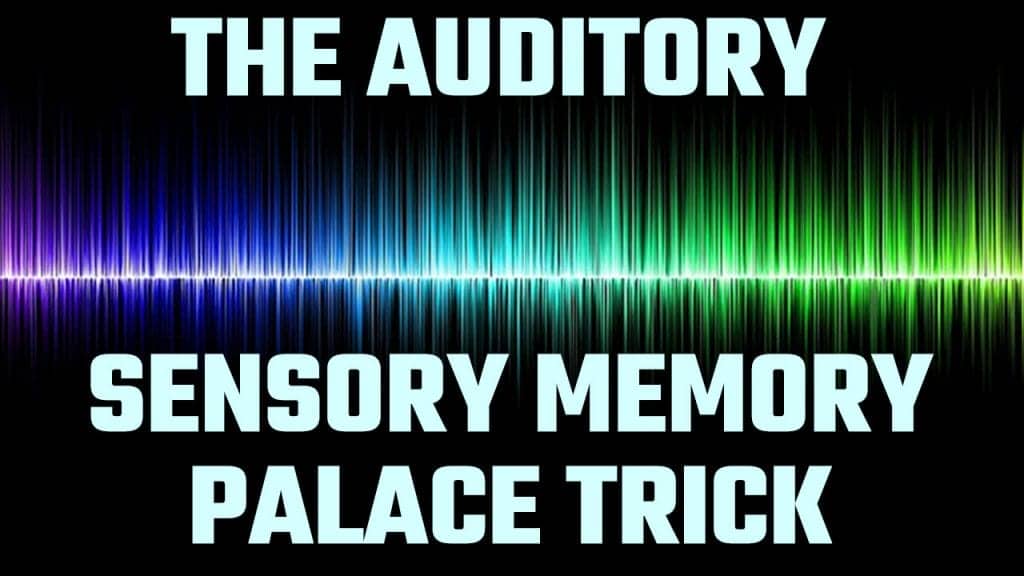
#1: The Auditory Sensory Memory Palace Trick
Think about a familiar place and recall what is sounded like. Or connect some aspect of the location with sound.
Take your school, for example.
When I think purely about sound in combination with one of the high schools I attended, I hear the voice of Mr. Andrews:
“Render therefore unto Caesar the things which are Caesar’s, and unto God the things that are God’s”.
He used to say this every time we were supposed to hand in our homework.
I still have an idea of what the classroom looked like and where it was in the school.
And since Mr. Andrews was a big fellow, I have a general sense of his physical presence. But it’s his voice that really stands out.
Likewise, I think of my various band teachers and can even place where different sections of the orchestra were in the different rooms without needed to render a visual picture.
Zero Visualization Needed
There is a way to turn this into a picture that requires zero visualization, but we’ll get to that soon.
For now, is this a cool memory trick or what?
The more you focus just on sounds, the more you’ll explore powerful dimensions of your memory.
This auditory focus will make a huge difference.
Especially in connection with the tutorial I’ve created for you on mining your autobiographical memory for more Memory Palaces. It works nicely in combination with these episodic memory exercises.
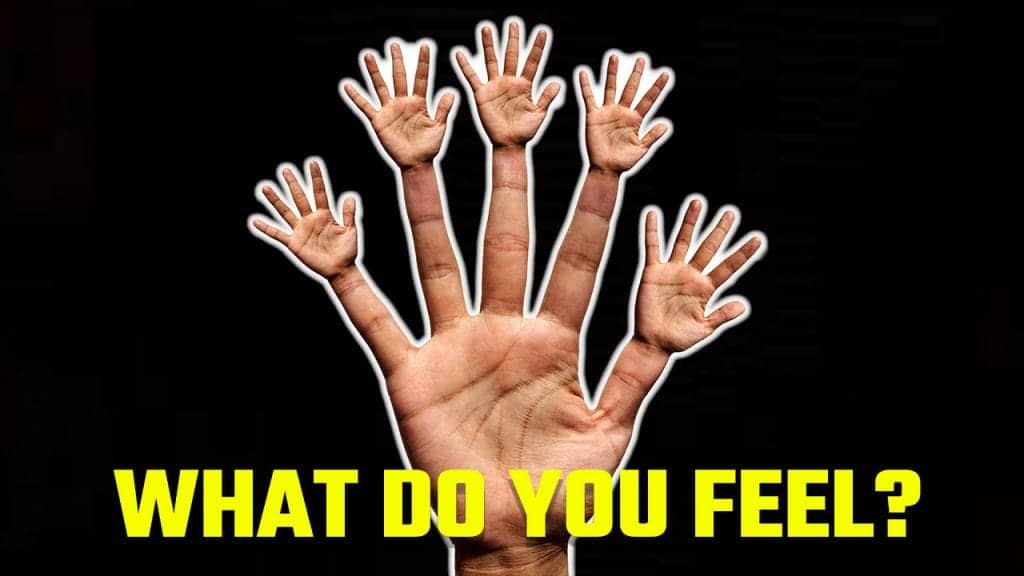
#2: The “What do you feel?” Exercise
Let’s go for something soft with this next exercise.
When I first completed this routine, I thought of my stuffed Cheshire cat.
I’ve had two in my life – one from when I visited Disneyland around age 10 and one my mom sent me just a few years ago to replace it.
(I had to get rid of the old one during one of my epic moves around the globe. Thanks for getting me a new one, mom!)
In terms of the Memory Palace this plush animal brings to mind, it’s not Disneyland.
Although I have used this famous theme park as a source of Memory Palaces before, in this case, I thought of the plane ride home from visiting Anaheim, California.
Now, you might think that an airplane is not great Memory Palace material.
Au contraire. Airplanes can be quite fantastic. They’re simple and can be divided in multiple ways.
Plus, some of my favorite students have been pilots, as you can see on the Magnetic Memory Method Testimonials page.
A Smiling Sensory Memory Example
Anyhow, I have this vague memory of being a 10 year old hugging the Cheshire cat.
He joins me here in this video summary of today’s exercises:
To make this feeling-based brain exercise work, I really dig into what hugging my toy felt like in my memory.
Then I dig further.
If you’re new to this kind of exercise, it can feel like a stretch at first.
But keep exploring.
If you follow along with me and find a plane trip of your own to explore, you can indeed find other physical sensations related to flying that come to mind.
Try accessing these different levels of sensation-based memory for yourself:
- The softness (or hardness) of the seat beneath you
- The temperature of the glass when you touch the window
- The feeling of anticipation as the plane accelerates down the runway
Suddenly, all kinds of sensations emerge when you complete this simple memory exercise.
Now It’s Your Turn
Think about flights you’ve taken. (Or train trips, road trips, etc.)
When I completed this exercise, all kinds of flights I’d forgotten emerge.
Write the ideas that come up into a Memory Journal and include all the sensations you can think of.
Think of it as a kind of personal, private sensory memory test.
Bang presto!
When I completed this exercise, I found myself with oodles of airplane and airport Memory Palaces to work with along with a wide variety of sensations.
Memory exercises like these are the closest thing to real magic that exists, don’t you think? Especially when used in the context of these additional recovered memory exercises.
Give them all a try!
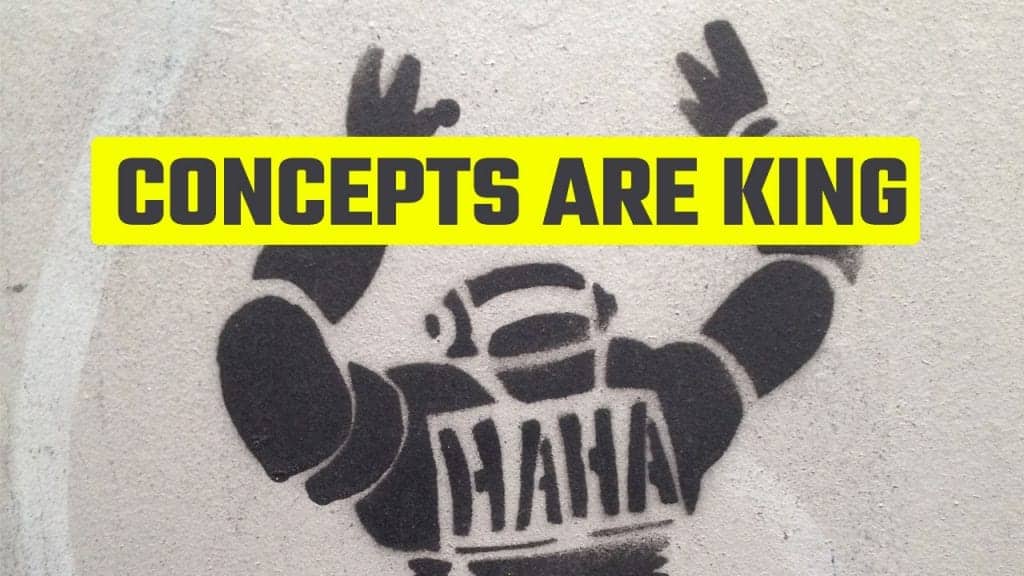
#3: The Concepts Are King Exercise
In a nutshell, this exercise helps you explore what you think and remember conceptually.
Now, this one is a bit of a stretch, I’ll admit. But stretching is good.
Start with one of the most basic concepts: Truth.
What comes to mind when you think of the truth?
I think of libraries.
And when I think of libraries, a ton of them come to mind. In fact, I’ve worked in three of them, and studied in dozens more. Each make great Memory Palaces.
Next, think of a concept like justice.
It’s true:
During high school I once wound up in the drunk tank. It sucked back then, but makes for an interesting Memory Palace now.
I took law in high school and observed a few court cases too. I had a friend who was a lawyer before he went to the great Memory Palace in the sky and he comes to mind too – all from thinking about the concept of justice.
The concepts of math, chemistry, weather all bring multiple associations – and not a single one of them can be seen visually, strictly speaking.
They’re just concepts.
And thinking about Einstein for math, Breaking Bad for chemistry and a meteorologist I know named Dave don’t require me to make mental images either.
Remember: lowering the cognitive load always helps you learn faster and remember more.
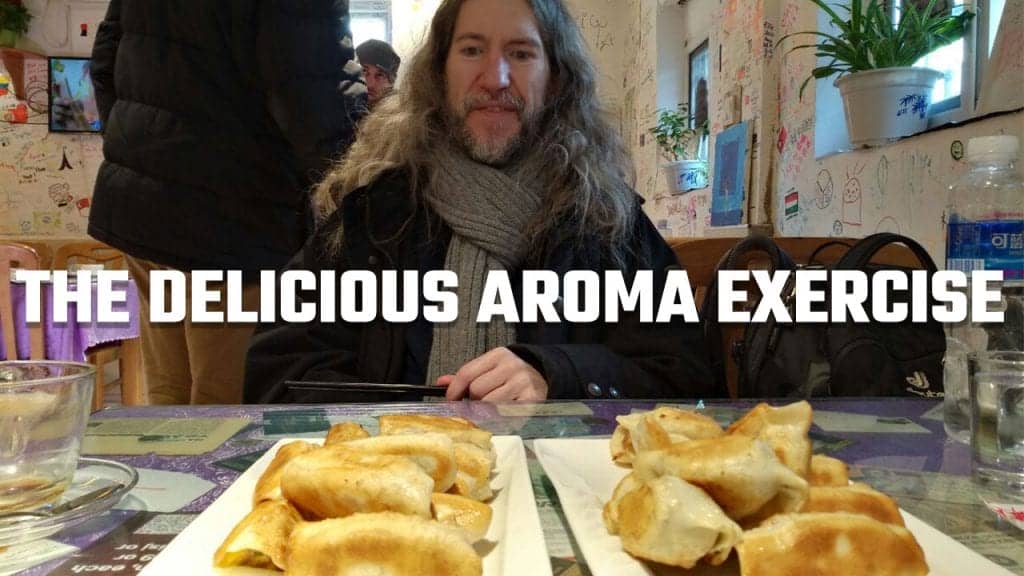
#4: The Delicious Aroma Exercise
I’ll bet at least one person in your family has some kind of secret recipe.
And even if it isn’t secret, there’s a dish they make really well that you adore. Maybe even something based around foods that improve memory.
Now, although I can’t eat a large number of things I used to love, my mom’s zucchini bread comes to mind.
My dad also makes a mean spaghetti. And since we moved around a lot, quite a few kitchens come to mind for use as Memory Palaces.
Then I think of a few romantic meals I’ve had over the years. These took place in buildings ranging from the CN Tower in Toronto to the Pizzeria Monte Carlo in Rome.
Even as someone who isn’t a foodie, there are oodles of tastes and aromas that come to mind all over the world.
Fruit juices and dates in Cairo, Lingonberry jam in Sweden, dumplings in Beijing… all wonderful Memory Palaces just waiting to be unlocked from memory.
I’ll bet you have dozens of options.
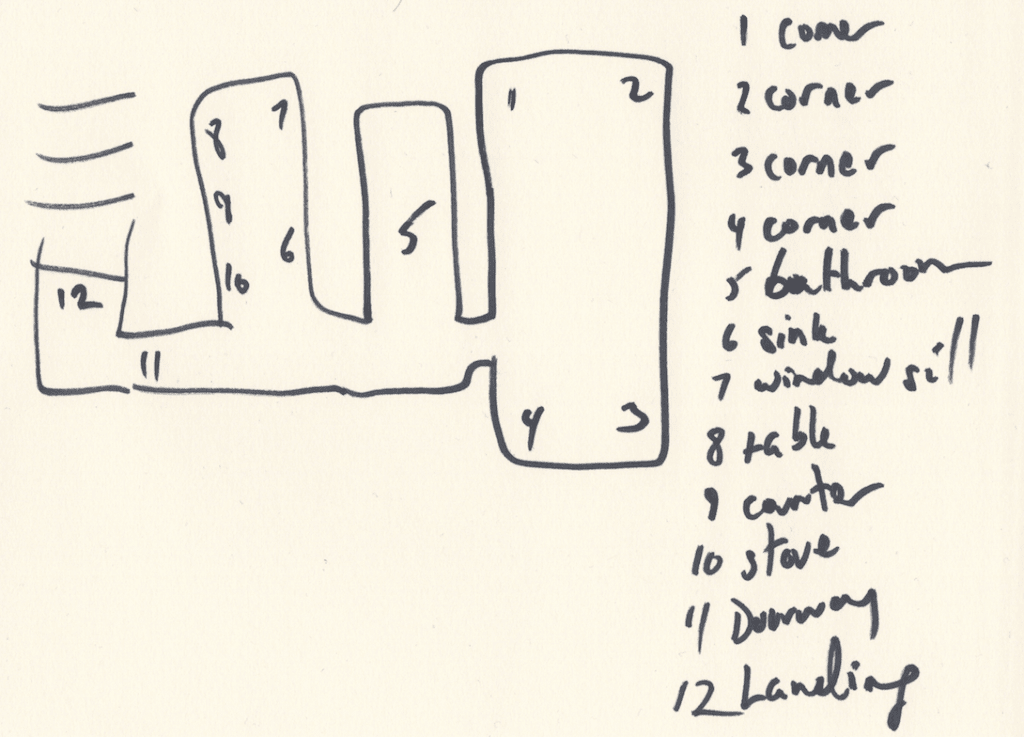
#5. The “Un-Visualization” Memory Palace Exercise
What? How can you “un-visualize” something?
Let me answer that question for you:
All you have to do is draw your Memory Palaces. On paper.
Instead of trying to juggle space in your mind, make it simple.
Rather than trying to imagine the rooms and hallways and garages and driveways and all kinds of things that you might not be able to see clearly in your min, break it down into simple squares.
Rest assured, multiple stages of memory will get exercised as you do this.
Now, sometimes people email me with the concern that they aren’t able to draw. If that’s you, please watch this tutorial for alternatives:
Regardless of whether I draw my Memory Palaces or think about them purely in my mind, here’s an important consideration:
When I first encountered memory techniques and the Memory Palace, I couldn’t fathom how on earth I was supposed to see myself moving through a building I wasn’t in.
And that’s a very good thing, because the strange explanations I was reading prompted me to solve this issue for myself through experimentation.
It also got me interested in studying far more than the books written by memory competitors. As a result, I wound up going deep into the history of these techniques, far deeper than Yates’ The Art of Memory, that’s for sure.
And reading between the lines of texts like the Rhetorica ad Herrenium, I discovered that they weren’t really talking about visualizing their Memory Palaces.
And the notion of making them tactile and strategizing them before using them gave me the idea to make them tactile in the simplest and easiest way you can:
With pencil and paper.
And as soon as I got results from doing this, I couldn’t stop exploring!
I am still amazed by just how many buildings I can visit in my mind. Making them visual simply by drawing squares on paper makes memory training so much easier.
No More Excuses Along Your Memory Training Journey
Let’s face it:
People with no hands can draw Memory Palaces with their teeth, their feet or even ask for others to help.
I know this for a fact because I’ve had correspondence from people who can’t move anything but their mouths.
Yet, each have created and used Memory Palaces by drawing them nonetheless. Or by following some of the suggestions suggested in the video above about what to do if you can’t develop your use of the method of loci through simple sketches.
In sum:
There really are no excuses.
Of course, if you don’t want to join the great memory tradition, no problem. I don’t want to learn how to pack a parachute and jump out of a plane. Some things just aren’t for everyone.
But if you do and you’ve ever struggled with the visual element, here’s a bold promise:
You really can rest assured that you can use memory techniques and they will work for you even without seeing pictures in your mind.
Here’s the best way I can show you how:
In fact, due to an interesting turn of events, I wound up competing once at a competition with mental athlete and memory expert Dave Farrow.
Based on that experience, I can tell you that there’s really no time to create pictures in your mind when the cameras are rolling and the clock is on.
The mnemonics I created in that short competition were almost purely conceptual and I was pleasantly surprised by just how well I did…
Especially as someone completely unprepared and with zero competition practice, history or particular interest in throwing down the gloves.
So even if you are hyper-visual, you’ll want to consider the advantages of adding these other senses to your memory practice.
What do you say?
Can you imagine yourself moving from a purely visual approach to using memory techniques to a multi-sensory approach?
I promise you’ll enjoy better results from memory techniques as a result. And if you need more, here are 5 Memory Palace Examples to improve your memory training practice.
Related Posts
- 3 Memory Palace Training Exercises [Beginner-Intermediate-Advanced]
Looking for Memory Palace training exercises? I've got 3 for you, ranging from beginner, to…







6 Responses
Hi Anthony.
When we use the senses we remember the information sooner.
Yes, all the senses combined really pack a punch!
Hi, Sir Anthony
Thank you so much for this.
My pleasure, Jessica. Thanks for checking them out.
Do you have a favorite?
Some people with aphantasia cant bring any senses to their mind. My twin sister and I can’t bring visual, audio, tactile, feelings, or spatial to our mind. I would love to be able to do mind palaces and have autobiographical memories etc. Over many many years of frustration and confusion I have learnt to achieve a level of self acceptance but it is like having an old computer for a brain when other people have all singing and dancing multi media computers. I know which one I feel would make life more fun!!
Many articles on aphantasia seem to totally dismiss it as a quaint quirky way of seeing the world, which fails to acknowledge the impact it can have when the aphant does not have use of other senses to compensate. When a person has autobiographical memory and loses it, such as in alzheimers, the pain for that person is fully recognised. For those of us who can not form autobiographical memories, I would appreciate the loss and lack was fully recognised because this is the reality of the situation.
Thanks for this post, Val.
I hear what you’re saying and certainly hope never to come across as dismissive. The fact is that I’m not alone in using Memory Palaces without much of a mind’s eye. If you check out my recent conversation on the podcast with Lynne Kelly, she’s (currently) Australia’s top memory champion in her age group. From what I understand, she has less of a mind’s eye than I do.
I’m confident that anyone who wants to use spatial memory (for that is what the Memory Palace technique is) can find a way. How I’ve always done it is simply to remove the burden from my mind and draw out the Memory Palace journeys using simple squares. People fully visual have found this approach to be advantageous as well, so it’s a win-win for everyone. We even have a student/MMM community member named James Gerwing who broke some memory records and became the 2019 Canadian Memory Champion.
A lot of it is just consistent implementation with the techniques. When I first learned them, I was so confused by the instructions because I couldn’t “see” what they heck they were talking about. So I just drew it out on paper and the rest is history. I’ve even competed myself and did well, even if I was slower than others.
Hope this helps and that you’ll invest some time and energy into simply following the steps. To be frank, so many people out there experience so much pain from their ability to remember their lives, that there’s an entire industry (called self help) to help them stop having autobiographical memory. You might be sitting on an asset, and in my next book, I talk about what I did to remove thinking altogether based on Gary Weber’s teaching in Happiness Beyond Thought. Even though I used memory techniques to complete some of the lessons, this process dissolved thought nonetheless.
Without comment or criticism of the suffering you mentioned, when my thoughts disappear completely, it is exquisite.